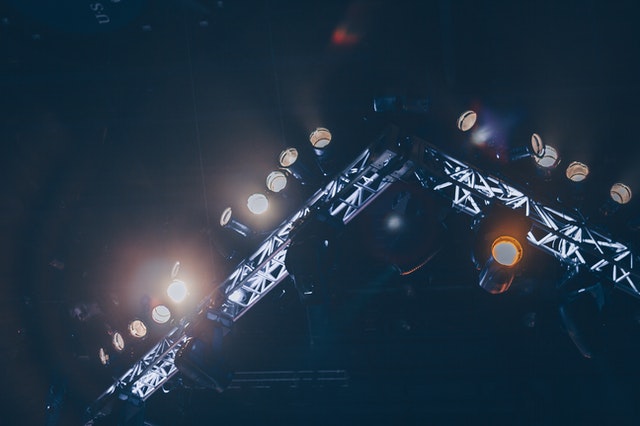The World of Stage Rigging for Music Festivals.

Any large music festival will usually have multiple stages typically including two or three main stages and dozens of smaller stages. Invariably the larger main stages are for the most popular artists with smaller stages for lesser known and up and coming artists. A key element of the stage design and construction is the truss and rigging.
Stage designers should always work in conjunction with a specialist truss and rigging supplier to ensure that the design is physically possible to construct and that it will fit within budget and time available. Event organisers should always use specialist truss and rigging suppliers because it is a highly skilled job that requires appropriate experience and a plethora of certifications and compliance with the numerous health and safety requirements.
From the stage design the riggers will assess the materials required and the construction process. Possible requirements could include the support of large visual screens, a lighting and speaker array and even performing dancers on raised platforms or suspended in the air.
When event organisers are considering potential suppliers for the truss and rigging of their stages their due diligence should include various factors, of particular importance is that any riggers used are NRC Level 2 qualified. The National Rigging Certificate (NRC) is the certification relevant for anyone actively working in rigging in the event and entertainment industry. All professional truss and rigging operators will usually only employ NRC qualified personnel because they have attained a professional standard in general event rigging practices. For those interested check the National Rigging Advisory Group (NRAG) which acts as the advisory body for the NRC.
Under the UK’s Health and Safety Executive organisation various directives cover all truss and rigging structures and must comply with a LOLER inspection. This is a systematic and detailed examination of the equipment and safety-critical parts, carried out by a competent person who must then complete a written report. This report must contain the information required by LOLER Schedule 1, including:
- the examination date
- the date when the next thorough examination is due
- any defects found which are (or could potentially become) a danger to people
Event organisers should ensure that all truss and rigging contractors comply with these strict requirements. Note however, that some rules may change for UK suppliers in early 2021 as a result of leaving the EU. Stage rigging is no longer an activity that can be performed by volunteer stage hands, it requires specialist qualified riggers and the approved inspection on completion is mandatory before the stage can be declared safe to use.
Using an events software management platform like FestivalPro event organisers get all the functionality they need to manage their truss and rigging contractors. The guys who are responsible for this software have been in the front line of event management for many years and the features are built from that experience and are performance artists themselves. The FestivalPro platform is easy to use and has comprehensive features for managing every aspect of the contractor agreement and technical specifications. Signed documents can be stored in an easily accessible central system to ensure that certifications and inspection reports are made available to those that need to see them.
Photo by Josh Sorenson from Pexels
<< Back to articles
Contact us
Get in touch to discuss your requirements.
US: +1 424 485 0220 (USA)
UK: +44 207 060 2666 (United Kingdom)
AU: +61 (2) 8357 0793 (Australia)
NZ: +64 (0)9887 8005 (New Zealand)